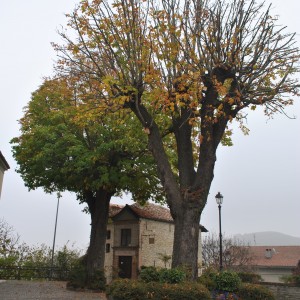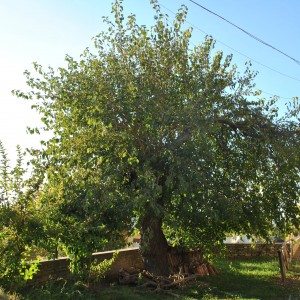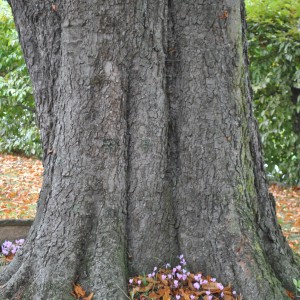St. Lawrence’s cathedral
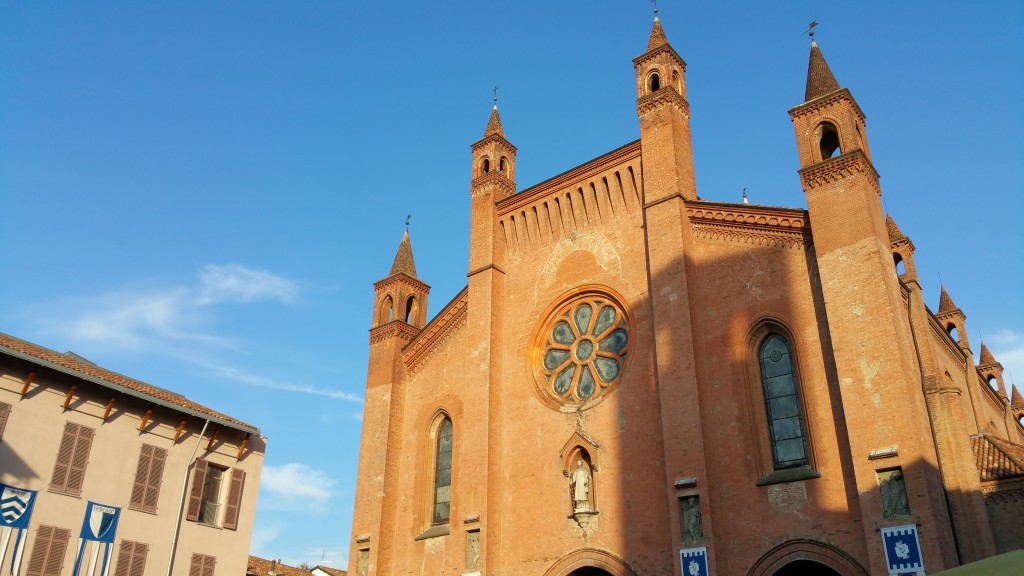
History
St. Lawrence’s Cathedral is the principal catholic centre of Alba, mother of the namesake diocese. The current cathedral was built between 1486 and 1517 because of the will of the bishop from Alba Andrea Novelli: taking possession of the diocese, in 1483, he had noticed the state of total degrade of the diocese and promoted its restoration. From the ancient church, already existing in the eleventh century, only the bell tower, the three portals, the façade colonnade and the crypt were maintained; the other parts, that were unstable, were demolished.
In 1577 and in 1584 the cathedral received the apostolic visit of the bishop Gerolamo Regazzoni from Bergamo and then of the archbishop Giulio Rossino from Amalfi; both of them indicated some operations that needed to be done to adapt the church, especially its presbytery, to the decrees of the Council of Trent. In 1626, after two earthquakes, the cross vault of the central nave collapses and is substituted in 1652.
During the eighteenth and the nineteenth centuries the cathedral experienced some stabilization restorations and was given some altars and chapels, the altar dedicated to Saint Teobaldo and that of Santissimo Sacramento too. In 1878 the façade is completed and in 1870, at the place of the central monofora a huge round rose window is opened.
Since 1871 it’s realized from different artists the ornamental setup of vaults and walls composed by frescoes.
Between 2007 and 2009 the new presbytery at the foot of the ladder and conducting to the older has been realized.
Externals
The majestic building in gothic style is characterized by the red bricks of the walls. It has a salient façade divided into three sections by some pillars with a squared map corresponding to the three internal naves. In the lowest part, the façade shows its “pronao” with pointed arches. In the lateral sections there are two twin gothic monofore, while in the central one there’s the wide central rose window from 1870.
The façade is decorated with four low reliefs showing the symbols of the four evangelists: from the left, there are Matthew’s angle, Mark’s lion, Luke’s ox and John’s eagle. Under the rose window there’s the statue of San Lorenzo Martire. These sculptures, realized in 1878, are artworks of the sculptor Luigi Cocchio from Milan.
On the left of the apsis, there’s the high bell tower dating back to the thirteenth century and modified in 1477. It shows four different orders of windows: from the lowest point, a monofore order, two before orders and a quadrifore order (but they have only two central openings). The covering is realized through a brick pinnacle with an octagonal map.
Insides
The inside of the church is divided into three high naves each with four spans, with a deep transept corresponding to the fourth span. The naves, covered with a cross vault painted as a starry sky, are divided from pointed arches lying down on bicolor pillars.
Along the lateral naves six chapels, three for each side, open up. Among them, the first is a baptistery with a dark marble baptismal font recently realized (2007).
Among the most important artworks guarded by the church, there’s the tomb sheet of the bishop Andrea Novelli, made by the sculptor Antonio Carloni. The altar of Saint Teobaldo is realized by the same author between 1514 and 1517. It is made up of the altar itself, a predella, an altarpiece and a cymatium.
In the third span of the central nave, at the foot of the ladder conducting to the presbytery, raised from the rest of the church because of the presence of the crypt, there’s the new presbytery realized between 2007 and 2009 for the will of the bishop of Alba Sebastiano Dho. It has a modern style, it’s made up of the altar with squared map, the “ambone” on the left and the new desk on the right.
In the major apsis, on the sides of the baroque altar, there are the wood stalls of the Choir, which are 34 and have been realized in the sixteenth century. On the left, there’s the coeval Episcopal cathedral with a canopy.
The Choir
Andrea Novelli the bishop arrived in Alba in 1484 and found the Cathedral in an awful state. He renewed the internal decorations and in 1512 commissioned a new choir to Bernardino Fossati. Bernardino replaced the already existent choir realized by Urbino de Surso de Papia in 1429. The choir is an artwork realized in ebony and made up of 35 different inlaid stalls creating half circles on two rows. In the centre there’s the Episcopal stall overcame by the canopy and surrounded by 17 minor stalls. A decorative motif runs over the canopies and the reredos of some minor stalls. This motif shows a castle which was a typical architecture of that place; an elegant vault, dividing the seats one from the other, presents vegetal motives developing from the armrest. The reredos of the most external stalls become precious and beautiful. Each of them is closed into a frame with geometrical motives: urban glimpses and liturgical objects. The sculptor promotes a new urban landscape for the city, inventing new architectural glimpses. Along the half church there are 35 representations, one different from the other, which recall the perspective drawings of the renaissance tradition. Bernardino uses different types of woods for the inlaid in order to create delicate nuances with hot shades. They sculpt various objects with them: musical instruments, rebound books, cult objects, the reversed chalice, the symbols of Passion, baskets with fruits, medieval villages on the top of the hills.
“The choir in the cathedral represents a masterpiece of wood carving, a real architectural monument inside of an architectural monument.” Giovanni Romano said.
Opening
St. Lawrence’s Cathedral is located in Piazza Risorgimento and can be visited everyday excluding the hours dedicated to the religious ceremonies (8.00; 8.30; 18.00 (f); 18.00 (s); 8.00; 10.30; 18.00; 20.30).
The guided visit to the cathedral is also included in Alba Panoramica – Il tour delle Cento Torri and in Alba Magica.



